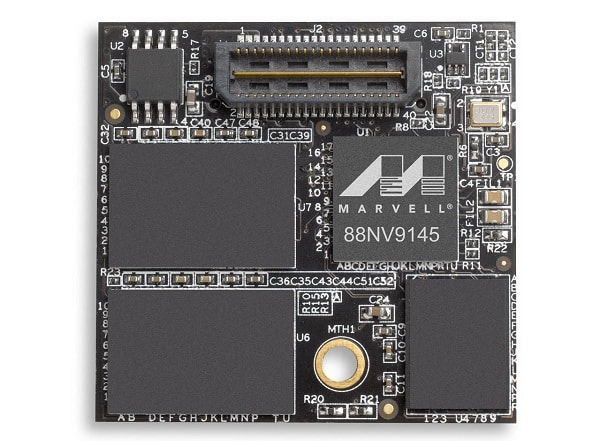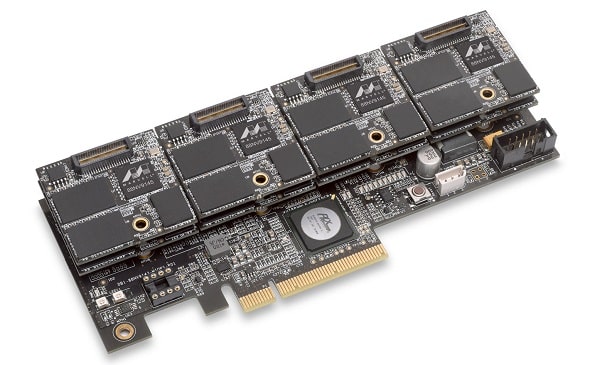OCZ had already promised to display the Z-Drive R5 at CES in an analyst meeting in early December, today OCZ has made the Z-Drive R5 official in a joint announcement with Marvell. OCZ teamed with Marvell on the next generation PCIe SSD storage solution dubbed Kilimanjaro. The Kilimanjaro platform brings not only the performance enterprise clients demand, but perhaps more importantly, a new level of reliability and endurance as well.
Marvell reference board shown
The key benefits of the Z-Drive R5 and the Kilimanjaro platform center around the way the drive interfaces with the host machine – in this case, a native PCIe to NAND flash controller platform, which allows for scalability without the need for a separate storage controller. Kilimanjaro is powered by the brand new Marvell 88NV9145, which is the first modularly scalable native PCIe SSD controller available in mass production.

The Marvell 88NV9145 is modular as shown above in its reference design and scales in performance extremely well. Shown below is a chart Marvell shared with us describing the performance increases as more modules are added to the design.

Each module feeds into a primary controller, which is similar in look to the layout of the enterprise-focused OCZ Z-Drive R4 and consumer-oriented RevoDrive 3 X2 with one key difference. With a native PCIe storage solution you bypass the SATA interface completely and remove the need for an onboard SATA RAID chip that ties all the SSDs together, like in the Z-Drive R4 for instance. Native PCIe is thus faster by avoiding the this bottleneck.

The Z-Drive R5 combines this hardware advantage with OCZ’s Virtualized Controller Architecture 3.0 (VCA 3.0) software to deliver up to 12TB of high-performance storage geared for database, enterprise, and virtualization applications. While OCZ isn’t quoting exact specifications in today’s announcement, they are expected to show a live demo at CES and have talked publicly about doubling the IOPS performance of the SandForce-based Z-Drive R4, closing in on 3 million IOPS with the Z-Drive R5.
Beyond just IOPS though, the Z-Drive R5 should have several other advantages over the R4, namely the superior handling of both compressible and non-compressible files and large data sets. The R5 will be available in both full and half height PCIe card sizes and can be configured with MLC, eMLC and SLC NAND options.





 Amazon
Amazon